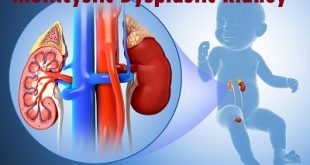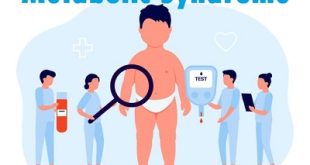Definition
Infectious mononucleosis (mono) is often called the kissing disease. The virus that causes mono is transmitted through saliva, so you can get it through kissing, but you can also be exposed through a cough or sneeze, or by sharing a glass or food utensils with someone who has mono. However, mononucleosis isn’t as contagious as some infections, such as the common cold.
History
Infectious mononucleosis was first described by Sprunt and Evans in the Bulletin of the Johns Hopkins Hospital in 1920. They described the clinical characteristics of Epstein-Barr virus (EBV) infectious mononucleosis. At the time, their article was entitled “Mononuclear leukocytosis in reaction to acute infection (infectious mononucleosis),” because the causative organism, EBV, had yet to be described.
Since the 1800s, infectious mononucleosis has been recognized as a clinical syndrome consisting of fever, pharyngitis, and adenopathy. The term glandular fever was first used in 1889 by German physicians and was termed Drüsenfieber. The association between infectious mononucleosis and EBV was described in the late 1960s.
Epidemiology
The incidence of IM currently ranges from 50 to 100 cases per 100,000 population, and peaks at ages 15 to 19 years. The seroprevalence studies from different countries consistently indicate past Epstein Barr virus (EBV) infection in over 90% of adults by the age of 40 years. A large study of children and adults in England found an increase in EBV seroprevalence from 39% in a 5- to 14-year-old age group to 90% in a 35- to 40-year-old age group. In developing countries, most children acquire EBV by the age of 4 years. In developed countries, primary EBV infection occurs later in life, and between 25% to 75% of infected people develop IM. Epidemiologic data from developed and some developing countries indicate continuing shift of primary EBV infection to older patients, causing higher rates of severe infection in adolescents and adults.
Outbreaks of IM are not common, probably the result of low efficiency of EBV transmission. The incubation period of IM is estimated at 30 to 50 days, but it is probably shorter in young children. No strong racial or sex predilection exists. No seasonality in IM incidence has been shown.
Risk factors of mononucleosis
Mono is most often seen in adolescents and young adults. Children can get the virus, but it often goes unnoticed because their symptoms are mild. Adults usually do not get mono, because they develop immunity to the virus over time. However, the virus is frequently found amongst populations of people living in close quarters. A person is at increased risk of getting mono if they:
- Are between the ages of 10 and 24
- Are in close contact with many people (Ex. college students, nurses, military personnel)
- Have intimate contact with a person who has mono or an active EBV infection.
- Share drinking glasses, eating utensils, dishes, or a toothbrush with an infected person
Causes
- The most common cause of mononucleosis is the Epstein-Barr virus, but other viruses can also cause this disease.
- Mononucleosis usually isn’t very serious. Most adults have been exposed to the Epstein-Barr virus and have built up antibodies. They’re immune and won’t get mononucleosis again.
Symptoms of mononucleosis
The incubation period of the virus is the time between when you contract the infection and when you start to have symptoms. It lasts four to six weeks. The signs and symptoms of mono typically last for one to two months.
The symptoms may include:
- A fever
- A sore throat
- Swollen lymph glands in your neck and armpits
- A headache
- Fatigue
- Muscle weakness
- Swollen tonsils
- Night sweats
Occasionally, your spleen or liver may also swell, but mononucleosis is rarely ever fatal.
Mono is hard to distinguish from other common viruses such as the flu. If your symptoms don’t improve after one or two weeks of home treatment such as resting, getting enough fluids, and eating healthy foods, see your doctor.
Complications of mononucleosis
Enlargement of the spleen
Mononucleosis may cause enlargement of the spleen. In extreme cases, your spleen may rupture, causing sharp, sudden pain in the left side of your upper abdomen. If such pain occurs, seek medical attention immediately you may need surgery.
Liver issues
Problems with your liver also may occur:
- You may experience mild liver inflammation (hepatitis).
- A yellowing of your skin and the whites of your eyes (jaundice) also occurs occasionally.
Less common complications
Mononucleosis can also result in the following less common complications:
Anemia- a decrease in red blood cells and in hemoglobin, an iron-rich protein in red blood cells
Thrombocytopenia- low count of platelets, which are blood cells involved in clotting
Heart problems- an inflammation of the heart muscle (myocarditis)
Complications involving the nervous system- meningitis, encephalitis and Guillain-Barre syndrome
Swollen tonsils- which can block breathing
The Epstein-Barr virus can cause much more serious illness in people who have impaired immune systems, such as people with HIV/AIDS or people taking drugs to suppress immunity after an organ transplant.
Diagnosis and test
Because other, more serious viruses such as hepatitis A can cause symptoms similar to mono, your doctor will work to rule out these possibilities.
Initial exam
Once you visit your doctor, they’ll normally ask how long you’ve had symptoms. If you’re between age 15 and 25, your doctor might also ask if you’ve been in contact with any individuals who have mono. Age is one of the main factors for diagnosing mono along with the most common symptoms: fever, sore throat, and swollen glands.
Your doctor will take your temperature and check the glands in your neck, armpits, and groin. Your doctor might also check the upper left part of your stomach to determine if your spleen is enlarged.
Complete blood count
Sometimes your doctor will request a complete blood count. This blood test will help your doctor determine how severe your illness is by looking at your levels of various blood cells. For example, a high lymphocyte count often indicates an infection such as mono.
White blood cell count
A mono infection typically causes your body to produce more white blood cells as it tries to defend itself. A high white blood cell count can’t confirm an infection with EBV, but the result suggests that it’s a strong possibility.
The monospot test
Lab tests are the second part of a doctor’s diagnosis. One of the most reliable ways to diagnose mononucleosis is the monospot test (or heterophile test). This blood test looks for antibodies these are proteins your immune system produces in response to harmful elements. However, it doesn’t look for EBV antibodies. Instead, the monospot test determines your levels of another group of antibodies your body is likely to produce when you’re infected with EBV. These are called heterophile antibodies.
The results of this test are the most consistent when it’s done between two and four weeks after symptoms of mono appear. At this point, you would have sufficient amounts of heterophile antibodies to trigger a reliable positive response.
This test isn’t always accurate, but it’s easy to do, and results are usually available within one hour or less.
EBV antibody test
If your monospot test comes back negative, your doctor might order an EBV antibody test. This blood test looks for EBV-specific antibodies. This test can detect mono as early as the first week you have symptoms, but it takes longer to get the results.
Treatment and medications
Because mono is a virus, antibiotics do not work against it. There is no vaccine for mono, though experts are working on one. There is no known way to “cure” mono, so doctors recommend managing symptoms until a person feels better. This may include:
- Pain relievers and fever reducers such as acetaminophen or ibuprofen
- Salt water gargles for a sore throat
- Plenty of rest
- Avoiding sports until symptoms are gone
Prevention of mononucleosis
There is no proven way to prevent mono, but a few simple tips can help avoid it:
- Washing hands after using the bathroom and before eating
- Coughing or sneezing into a sleeve or tissue and washing hands afterward
- Avoiding people who have mono or who have symptoms of mono until they recover
- For those with symptoms of mono, staying home from work or school
- Not sharing objects that come into contact with the mouth
 Diseases Treatments Dictionary This is complete solution to read all diseases treatments Which covers Prevention, Causes, Symptoms, Medical Terms, Drugs, Prescription, Natural Remedies with cures and Treatments. Most of the common diseases were listed in names, split with categories.
Diseases Treatments Dictionary This is complete solution to read all diseases treatments Which covers Prevention, Causes, Symptoms, Medical Terms, Drugs, Prescription, Natural Remedies with cures and Treatments. Most of the common diseases were listed in names, split with categories.








Is this kissing disease lethal ?
Death is an extremely rare occurrence in mononucleosis patients if it is not treated for long term.